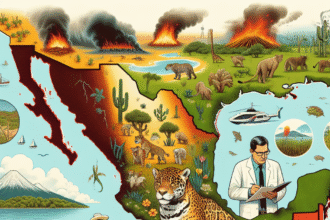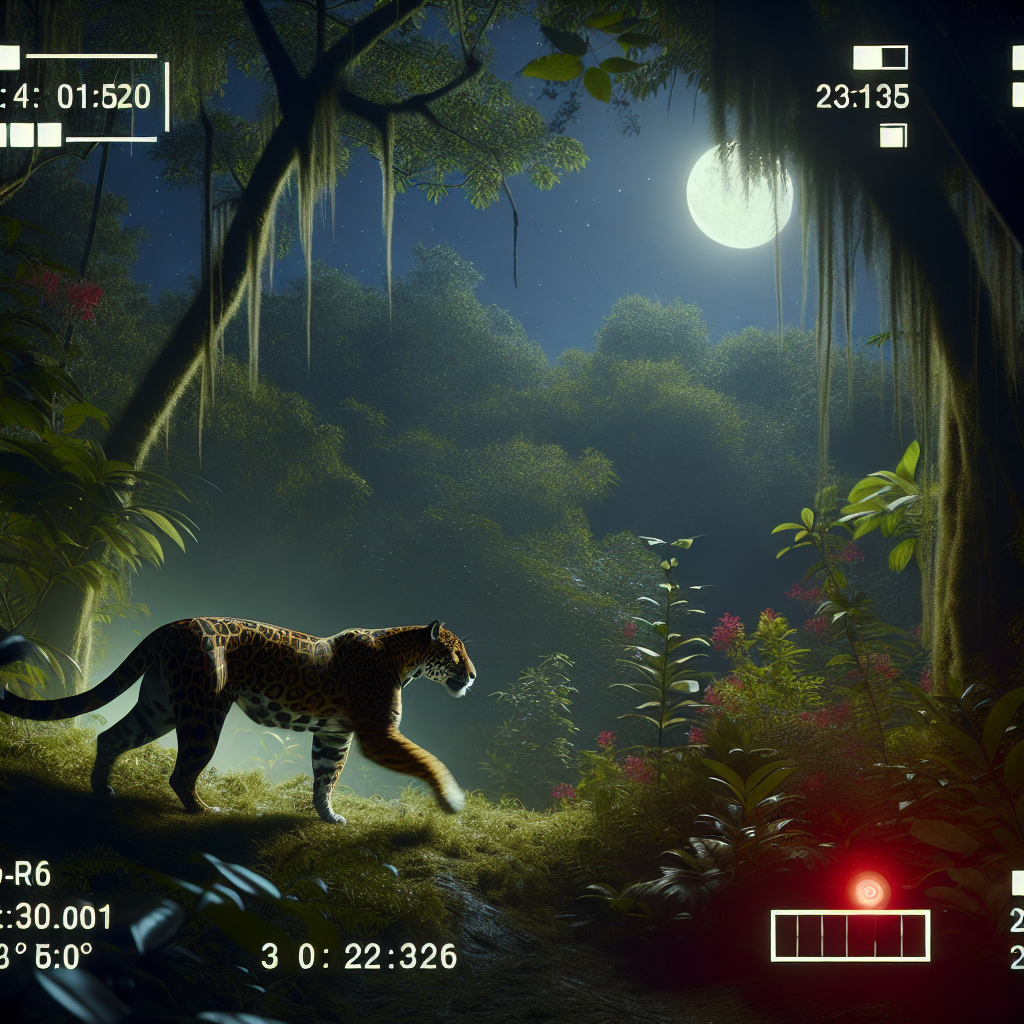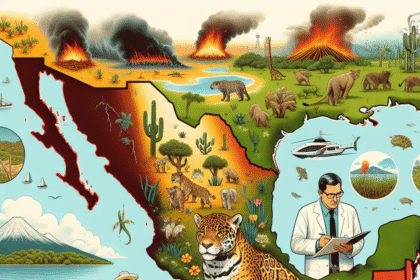Real-Time Jaguar Camera Trap Data: Monitoring Conservation Efforts in Tulum
The Significance of Jaguars in Ecosystems
Jaguars (Panthera onca) are a keystone species in their ecosystems, influencing the structure of animal populations and the health of the landscapes they inhabit. As apex predators, jaguars play a pivotal role in controlling the populations of other species, thereby helping maintain ecological balance. Their presence serves as an indicator of a healthy ecosystem, and effective conservation of jaguar populations is critical to preserving biodiversity, especially in regions like Tulum, Mexico.
The Role of Technology in Conservation
Modern conservation efforts increasingly rely on technology to monitor wildlife populations in real time. Camera traps have emerged as a vital tool for researchers and conservationists in the field. These motion-activated devices capture images and videos of wildlife, allowing researchers to collect data without human interference. In Tulum, these camera traps provide valuable insights into jaguar behavior, population dynamics, and habitat usage, enabling targeted conservation strategies.
The Tulum Conservation Project
The Tulum Conservation Project focuses on protecting the jaguar populations within the Tulum National Park and surrounding areas. Utilizing real-time camera trap data, conservationists can monitor jaguar movements, feeding habits, breeding behaviors, and interactions with other species. This data not only helps scientists understand the jaguar’s ecological role but also informs efforts to mitigate human-wildlife conflict, habitat degradation, and poaching.
Real-Time Data Collection Mechanisms
Real-time data collection involves several steps:
-
Camera Placement: Strategically placed camera traps capture images at various locations across the park, focusing on areas with signs of jaguar activity, such as tracks and prey remains.
-
Data Transmission: Unlike traditional camera traps that require manual retrieval of memory cards, many modern traps are equipped with cellular technology. These traps automatically upload images and videos to a central database, allowing conservationists to access data instantaneously.
- Monitoring: Researchers continuously monitor the data stream, analyzing patterns in jaguar movement, population health, and interactions with other species in real time.
Analyzing the Data: Key Findings
The real-time data collected from Tulum’s camera traps provides several critical insights:
-
Population Estimation: By photos of individual jaguars, researchers can estimate population density through unique patterns on their fur, akin to fingerprints. This helps in assessing the overall health of the population.
-
Habitat Use: Camera traps reveal preferred habitats and movement corridors while identifying areas of human encroachment. This information guides conservation efforts by highlighting regions that require protective measures.
-
Breeding Behavior: Real-time images capture mating behaviors and cub sightings, helping researchers understand reproductive success and juvenile survival rates. An increase in cub sightings indicates a healthy breeding population.
- Human-Wildlife Conflict: Data can identify locations where jaguars come into contact with livestock or human settlements, providing insights into conflict zones. This knowledge aids in developing mitigation strategies, such as building predator-proof enclosures for livestock.
Collaborative Efforts in Conservation
The success of the Tulum Conservation Project hinges on the collaboration between local communities, governmental bodies, and international organizations. Community engagement fosters a sense of ownership over local wildlife and promotes sustainable practices. Workshops and educational campaigns help local residents understand the importance of preserving jaguars and the benefits of biodiversity.
In addition, partnerships with academic institutions enhance research capabilities. Biologists and ecologists contribute expertise in data analysis, providing advanced insights into jaguar behavior and ecosystem dynamics. The integration of indigenous ecological knowledge further enriches conservation strategies.
The Impact of Climate Change on Jaguar Populations
Climate change poses an ongoing threat to jaguar habitats. As temperatures rise and weather patterns shift, the distribution of prey species and suitable habitats for jaguars changes. Real-time camera trap data helps monitor these fluctuations, enabling proactive measures to protect jaguar habitats and maintain ecological integrity.
Future Directions in Jaguar Conservation
The advancements in camera trap technology represent only a fraction of the potential for conservation efforts. Future initiatives may include:
-
Artificial Intelligence: Employing AI algorithms for image analysis can enhance the accuracy and efficiency of monitoring efforts. Machine learning may facilitate quicker identification of individual animals and help predict behavioral patterns.
-
Community-Based Conservation: Strengthening community involvement will be crucial for the sustainability of conservation programs. Training local residents on responsible tourism practices and the significance of biodiversity conservation can foster lasting change.
-
Ecotourism Development: Harnessing the natural beauty of Tulum while promoting jaguar conservation can generate funding for ongoing projects. Eco-friendly tourism guidelines can attract visitors while protecting habitats.
- Habitat Restoration Initiatives: Restoring degraded areas and rewilding projects are vital for sustaining jaguar populations. Reconnecting fragmented habitats will allow for genetic diversity and healthy population dynamics.
Public Engagement and Citizen Science
Engaging the wider public through citizen science projects amplifies conservation efforts. Training volunteers to assist in camera trap monitoring and data collection empowers communities and raises awareness of the critical role jaguars play in their environment. Social media campaigns and online platforms facilitate knowledge sharing, enabling enthusiasts to follow real-time updates and influences conservation conversations in broader communities.
Conclusion
Real-time camera trap data from Tulum exemplifies the intersection of technology and conservation, providing a model for monitoring essential wildlife populations. As efforts continue to protect jaguars in Tulum and beyond, the collaboration between technology, community, and science will be crucial for preserving this iconic species and the ecosystems they inhabit. Through innovative approaches and ongoing vigilance, conservationists can ensure that the roars of jaguars echo through Tulum for generations to come.







